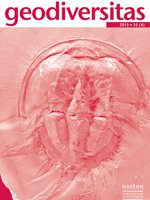Many karstic fissure fillings from the Quercy (France) constitute fossil bearing localities which give an exceptional open laboratory for the study of evolution of vertebrates and especially mammals from the Eocene to the Early Miocene. A couple of localities from the Late Oligocene (MP 28 = 24.9-24.5 Ma) have yielded, among several taxa, the best sample ever found of a hemicyonine ursid. This sample corresponds to a new species and allows a reappraisal of several other species belonging to lineages attributed to a new tribe (Cephalogalini n. tr.). The latter occupied in Europe along the Oligocene and the lower Miocene some canid-like ecological niches. This tribe was replaced at the end of the Lower Miocene by the Hemicyonini, another tribe of Hemicyoninae (Ursidae).
How to translate text using browser tools
1 September 2012
Ursidae (Mammalia, Carnivora) from the Late Oligocene of the “Phosphorites du Quercy” (France) and a reappraisal of the genus Cephalogale Geoffroy, 1862
Louis De Bonis
ACCESS THE FULL ARTICLE
It is not available for individual sale.
This article is only available to subscribers.
It is not available for individual sale.
It is not available for individual sale.

Geodiversitas
Vol. 35 • No. 4
December 2013
Vol. 35 • No. 4
December 2013




